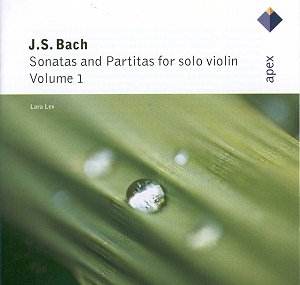
Sonatas and Partitas for Violin BWV 1001 - 1003
Sonata no. 1 in G minor
Partita no. 1 in B minor
Sonata no. 2 in A minor
Rec: July 2001, Kuusaa Hall, Kuusankosi, Finland.
BUY NOW
 |
JOHANN SEBASTIAN BACH
(1685-1750) Sonatas and Partitas for Violin BWV 1001 - 1003 Sonata no. 1 in G minor Partita no. 1 in B minor Sonata no. 2 in A minor Rec: July 2001, Kuusaa Hall, Kuusankosi, Finland. |
Error processing SSI file |
|
|
||
Bach's sonatas and partitas for solo violin stand apart in the composer's work, as well as in the entire repertoire of violin music. While other composers have written solo pieces for violin (some of Bach's predecessors, such as Biber, Westhoff and Walther had written solo violin works, and others wrote solo pieces after Bach), none approach Bach's works, which stand at the summit of the violin repertoire. Written in the middle of Bach's life (completed in 1720), these six suites achieve the unthinkable - they manage to express complex polyphonic music with an essentially monophonic instrument. When listening to them, one is constantly amazed at the unheard harmonies that are created in the listener's inner ear through Bach's magnificently subtle counterpoint. |
|
Return to Index |